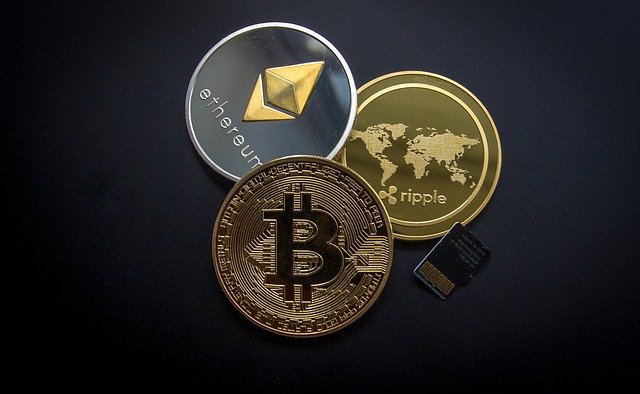By Alexandre Pham, Vice President, EMEA at Adjust
Crypto and digital assets became one of the hottest tech topics in 2021, and have only continued to gain momentum in 2022 so far. Within this fast paced ecosystem, it’s crypto apps in particular that are seeing massive user growth.
Adoption of crypto apps skyrocketed in 2021. Compared to 2020, installs grew by over 400%, and sessions increased by over 567%. These are promising statistics that point to the emergence of cryptocurrency exchanges as a dominant force in the world of fintech and mobile apps in general.
But explosive growth like this comes with its own challenges, not the least of which is sustaining this growth and engaging users. So let’s explore what’s behind the crypto explosion and the growth opportunities that lie ahead for crypto apps in 2022.
Mainstreaming cryptocurrency
The speculative nature of Bitcoin and other cryptocurrencies has long prevented it from going mainstream, but that’s been changing for a while, and made leaps forward in 2021. There are several reasons for this, including the fact that Bitcoin’s market capitalization reached $1 trillion for the first time in February 2021, making it the fastest asset to ever do so. After a brief decline in the summer, the entire crypto market cap reached $3 trillion by November. This was driven by retail enthusiasm, maturing technologies, and interest from institutional investors.
Major payments companies also began to get on board with digital assets. PayPal began allowing U.S. customers to buy, sell, and hold four cryptocurrencies in late 2020. Popular payment apps Venmo and Cash App also added crypto purchasing and sending functionality, while Square changed its name to Block in a nod to blockchain and its new focus on crypto.
But it wasn’t just fintechs embracing crypto. VISA launched a crypto advisory service, began a program to settle VISA transactions with the USDC stablecoin on the Ethereum blockchain, and purchased a CryptoPunk NFT. Mastercard, on the other hand, announced new crypto-linked payment cards in APAC and a crypto rewards credit card with Gemini exchange. There are more crypto-related partnerships planned for both VISA and Mastercard in 2022.
4 tips to grow crypto apps in 2022
Our research finds that crypto app install and session activity maps to cryptocurrency market performance, with most metrics peaking in Q1 in 2021, rising again with prices in the fall, and slowing down at the end of the year. Despite the peaks, the year has seen steady growth for crypto apps in most respects.
We also found that crypto apps beat stock trading apps when it comes to user engagement, which is particularly impressive considering that stock trading apps are typically the standout for engagement metrics within the broader fintech vertical. We compared crypto apps to stock trading apps in 2021, and the former outperformed the latter on everything from session lengths and sessions per user per day to retention rates and stickiness. This indicates an engaged and high-retention user base for crypto apps.
So how can crypto app marketers capitalize on this pattern? Here are a few tips:
1. Pay attention to advertising compliance requirements: With scams very prevalent in the space in 2018, Google, Facebook, Twitter, and LinkedIn all banned cryptocurrency-related advertising. While some of these regulations have eased, crypto ads may still be regulated on a jurisdictional basis and marketers must get to know the compliance requirements in any market they wish to enter.
2. Experiment with creatives: When running ads for your crypto app, be sure to iterate, A/B test, and focus on the best-performing creatives. Feel free to experiment with different creatives for different audiences. Money can be a sensitive topic, and crypto is a new and complex space. While some users may respond well to bold messaging, others may prefer a safer and more conservative tone — especially as you wear out the supply of early adopters and start looking for new audiences, which brings me to my next point.
3. Consider video and OTT/CTV ads — The 2022 Super Bowl was dubbed by some as the “Crypto Bowl”, with ads from Coinbase, FTX, eToro, and Crypto.com dominating airwaves and leading to a 279% jump in downloads for the apps.
4. Build on user loyalty and retention: Trading apps naturally lend to habitual usage, which is confirmed in the high session and retention rates we reported. To become the crypto or finance platform of choice for users in the long term, apps need to continue to cultivate this user engagement through the ups and downs of market performance by adding utility for users (such as new features, network integrations, asset listings, or educational materials) and retargeting inactive users. And all of this requires in-depth user data to draw on.
With such exponential growth and an exceptionally engaged user base offering high lifetime value, crypto mobile apps have become a key gateway to the crypto economy. As competition for users heats up, crypto and fintech apps will need to maximize their user acquisition efforts, optimize their ad spend, and accurately measure every stage of the user journey. Armed with good data and a solid strategy to find and engage the right users, crypto apps are poised for even more explosive growth in 2022.


